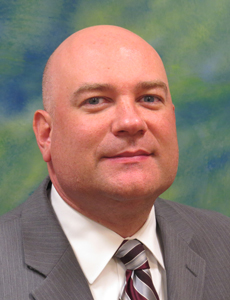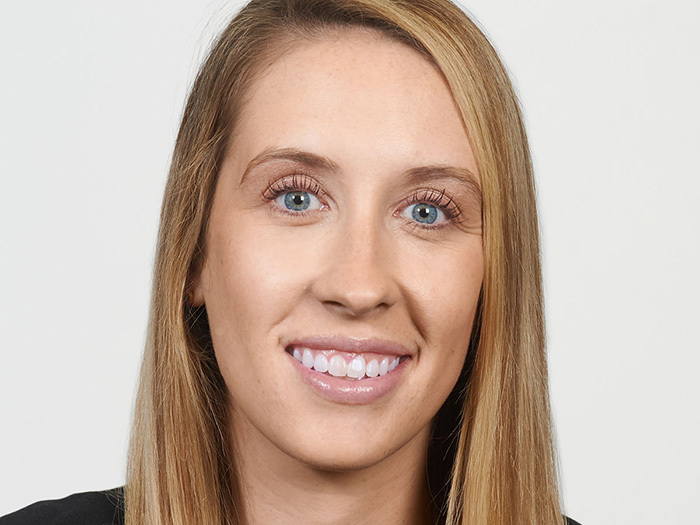Tech Is Advancing the Biopsychosocial Care Movement. Is Your Workers’ Comp Program Ready?

After an ankle injury at work leaves an injured employee stuck at home, they may begin to feel differently about themselves.
Money becomes tight and they’re arguing with their spouse. Unable to exercise, they may start to feel insecure about their physical appearance; and with little to do but sit in front of the TV all day, a lack of purpose may begin to set in.
“That person with an ankle sprain also has a brain connected to them,” said Dr. Scott Primack, founder and CEO of Comprehensive Outcomes Management Technologies.
“Their brain is influenced by many things — by how they’re treated at work, by how they’re treated at home, by how they’re treated by colleagues. That’s where the psychological and the social elements come in.”
That’s where the biopsychosocial treatment model comes into play. The biopsychosocial approach helps employers and payers address any negative psychological and socioeconomic factors that can make claims drag on.

Dr. Robert Hall, corporate medical director, Optum Workers’ Comp and Auto No-fault
“Depression makes pain worse and pain makes depression worse. So, it’s a vicious cycle,” said Dr. Robert Hall, corporate medical director at Optum Workers’ Comp and Auto No-fault.
“Knowing how different psychosocial factors and physical conditions can interact with each other and how they can potentially worsen each other can help providers develop more comprehensive and effective treatment plans.”
As this approach has evolved, companies and care providers have developed tools, including surveys and apps, designed to assess injured workers’ biopsychosocial factors. There has also been a push toward being more forward-looking, using data analytics to flag claims that could potentially be at risk of delayed recovery due to psychological and socio-economic factors.
New Technologies Promise Better Treatment Plans

Dr. Michael Nguyen, director of clinical pharmacy, myMatrixx
Proponents of these tools believe that they will allow care providers to develop better treatment plans for injured workers and will hasten processes like return-to-work, which will ultimately reduce claims costs.
“Identifying biopsychosocial issues will have an impact both on indemnity and medical components of a claim in workers’ compensation,” said Dr. Michael Nguyen, director of clinical pharmacy at myMatrixx.
“Identification of PTSD cases have already generated positive outcomes in return-to-work and increased functioning. Risk management will need to consider the effects of biopsychosocial factors on their programs if they need to control costs.”
Nguyen said myMatrixx is currently developing a tool that would use models based on claims data to identify patients that may be experiencing biopsychosocial deficiencies. Injured workers whose claims have been flagged would then be referred to clinicians who would help treat these biopsychosocial factors.
They then work with clinicians at Carisk Partners to address their unique biopsychosocial issues.
“There are thousands of claims out there and most claims, as you know, resolve on their own. People get better and they go back to work,” Nguyen said. “The ones that don’t may have underlying biopsychosocial issues that can be easily addressed. We’re building technology to identify these claims in order to provide the specific care they need.”
Primack’s company, Comprehensive Outcomes Management Technologies, has developed similar technology that would analyze the biopsychosocial factors of injured workers suffering from musculoskeletal disorders, and use their psychological resilience levels to develop a treatment plan.
They then work with the telemedicine platform The Sababa Health Group to deliver care to patients and are working with the network Prime Health Services to bring their approach nationwide.
“It’s fascinating that when you put together three components of what makes someone tick — the biological component, the psychological component and then the social component,” Primack said. “When you do that, now you’re really treating someone holistically.”
These biopsychosocial tools may be new to workers’ comp, but Hall noted that they’re not too different from the conversations about medical and mental health history that go on during a traditional doctor’s visit.
“We as health care providers have known for a long time that psychosocial factors can impact recovery and we know that every patient is different,” he said. “That information has traditionally been obtained in the exam room and through written patient questionnaires, but now that information is becoming obtainable through technology.”
What Faith Do Brokers and Carriers Put in These Tools?
Brokers and carriers noted that these new tools have the potential to reduce costs and make finding coverage easier, so long as the data they’re using is reliable.
“It all depends on how good the data is,” said Lisa Haug, RN, BSN, CCM, AIC, managing director of medical management at Safety National. “I think patient assessment questionnaires are great. I think they give you a good indication of what’s going on with the patient as a whole.”
They emphasized that while these new tools might be helpful for assessing an injured workers’ biopsychosocial factors, the real key will be whether programs are focused on treating the whole injured worker instead of just focusing on the comp claim.
“I think the proof is in the pudding. If we look at claims and we look at ones that have psychosocial components, those claims are going to be the ones that are more expensive,” said Dennis Tierney, national director of workers’ compensation claims at Marsh.

Dennis Tierney
national director of WC claims
Marsh.
“No longer can we focus on the comp claim, we have to focus on the whole person because the whole person is who we’re dealing with.”
Haug agreed and noted that carriers and underwriters might be more comfortable taking on a company’s workers’ compensation risk if they knew their program took biopsychosocial factors into consideration.
“We need to know what is going on with an injured worker. Sure, they have back pain, but what other factors can be impacting that recovery and how can we keep all of it in mind,” she said.
On the other hand, if companies don’t take an injured worker’s biopsychosocial factors into account, they could start to see their workers’ compensation costs go up.
“In the past when someone got a workers’ comp claim, you just thought about the workers’ comp injury — how you’re going to treat it, how you’re going to get this person better. Now, when you look at a workers’ comp claim, we have to look at the whole person,” Tierney said.
“If clients aren’t going to embrace this approach, they’re going to struggle, and their costs are going to go up.”
Haug likened them to physical comorbidities which, if left unaddressed, can also derail claims.
“Biopsychosocial factors definitely impact the recovery of the claim and we need to keep those effects in mind in order for the worker to make a successful recovery,” she said.
Some payers may be hesitant to take on the costs of biopsychosocial programs, or they may claim that the psychological portions aren’t the result of the work injury. Companies with the best risk management strategies will have resources, such as Employee Assistance Programs, in addition to their workers’ compensation programs to help their employees manage any mental health issues they may be experiencing.
While payers may be hesitant about taking on the costs of biopsychosocial care programs, Nguyen believes that they will ultimately embrace them because they allow for better monitoring of injured worker care.
“We can track things like medication adherence, whether the patient attends their scheduled appointments. The application can also track things like physical activity. And it can enable communication between the patient and their clinicians who monitor symptoms related to mental health and substance abuse diagnoses,” he said.
“I know there’s hesitation from payers to address biopsychosocial components of care and behavioral health in general, but the new technologies designed to deliver and monitor biopsychosocial therapies and treatments will enable payers to be involved and see progress in real time. I think that’s one of the things that can break down the barriers to accepting this new approach.” &









